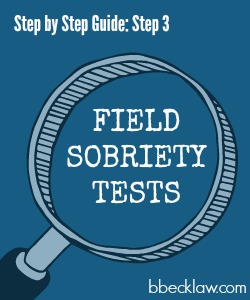 Once a motorist’s vehicle is secure on the side of the road pursuant to the traffic stop, the officer will then make a determination as to whether the motorist is impaired. The officer’s first encounter with the driver will be when he or she comes to the driver’s side window and asks the driver to roll his or her window down for the purpose of informing the driver of the reason for the stop and to gather the driver’s credentials.
Once a motorist’s vehicle is secure on the side of the road pursuant to the traffic stop, the officer will then make a determination as to whether the motorist is impaired. The officer’s first encounter with the driver will be when he or she comes to the driver’s side window and asks the driver to roll his or her window down for the purpose of informing the driver of the reason for the stop and to gather the driver’s credentials.  It is at this point that the officer will be trying to detect clues (odor of alcohol or drugs, glassy eyes, slurred speech, fumbling of paperwork, “nervousness” and other indications) that the driver may be intoxicated.
It is at this point that the officer will be trying to detect clues (odor of alcohol or drugs, glassy eyes, slurred speech, fumbling of paperwork, “nervousness” and other indications) that the driver may be intoxicated.
In the event the officer detects one or more of these clues he or she will then ask the motorist to exit the vehicle for the purpose of performing “field sobriety tests.” While there are many kinds of tests that officers employ from township to township and among State Police, only three are recognized by the National Highway Traffic Safety Administration:
- The “walk and turn” test. The officer asks the motorist to walk nine steps on a straight line and then turn around and take nine steps back.
- The “one leg stand” test. The motorist is asked to stand straight up, arms at his or her side, and to hold one leg off the ground for predetermined length of time.
- The “horizontal gaze nystagmus” (HGN) where the officer attempts to determine how long the eye can follow a moving object before the eyeball “twitches” or “jerks.”
In addition, the motorist may be asked to submit to a “portable breath test” (PBT), which provides a rough measure of the driver’s blood alcohol content.
Once the officer completes the field sobriety testing, he or she will then make a determination, based on the totality of the circumstances he or she has observed, whether there is reasonable suspicion to believe that the driver is driving under the influence.
It is important to know that if a court finds the police officer administered the field sobriety test incorrectly that this can serve as a basis for the defendant’s DUI case to be dismissed outright.

